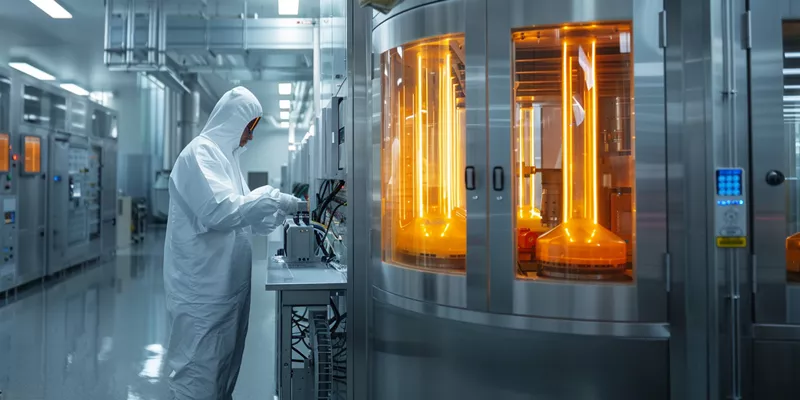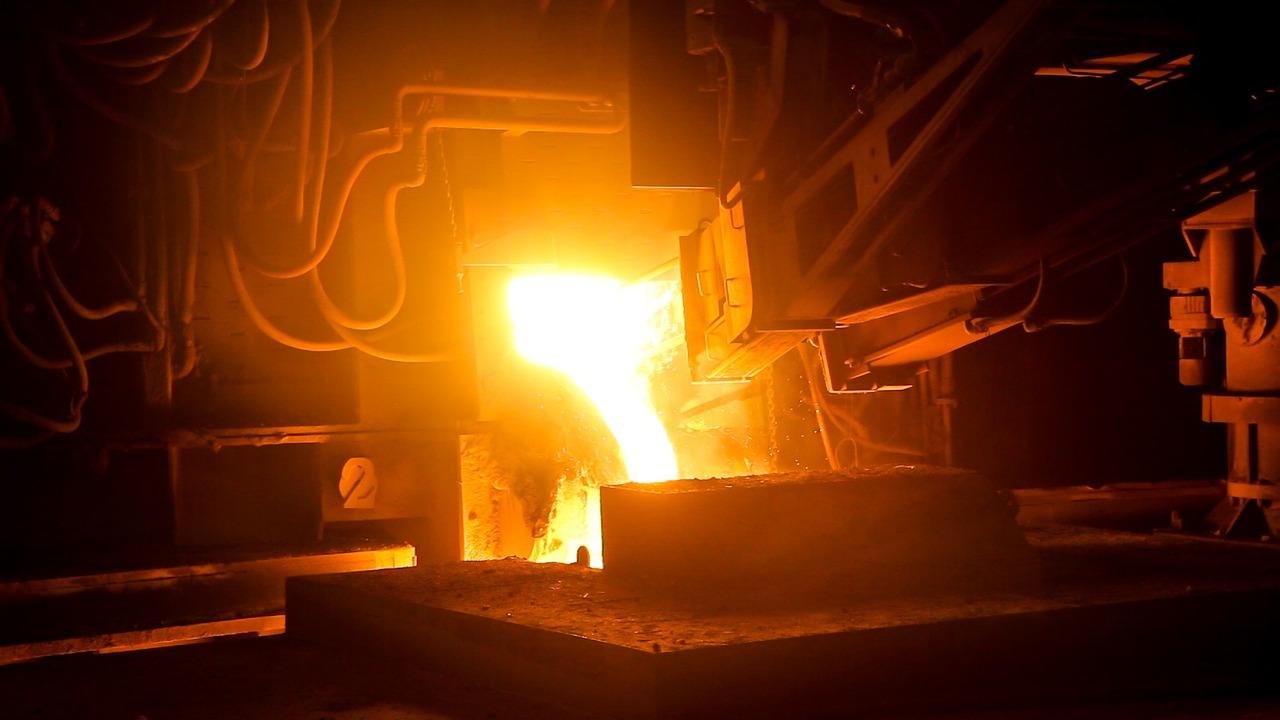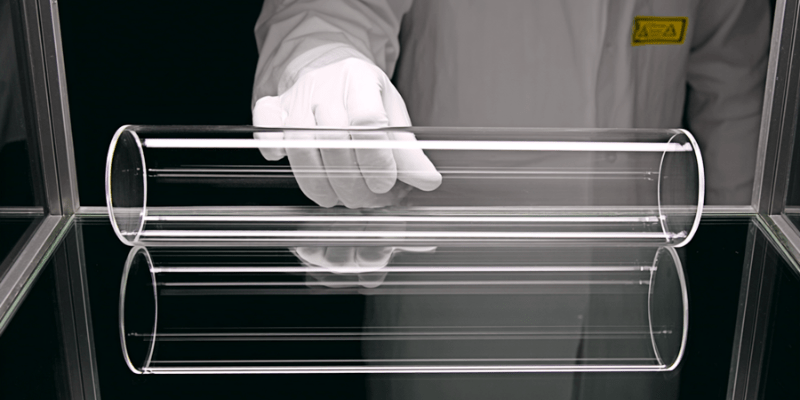Engineers and technical buyers face new challenges when choosing UV quartz tubes for high-precision photonics and sterilization systems.
UV quartz tubes must be matched to wavelength transmission, material grade, and application-specific requirements.

This guide provides a step-by-step framework for selecting, verifying, and maintaining UV quartz tubes, with a focus on wavelength, material, and supplier standards.
Understanding UV Quartz Tubes
UV quartz tubes are specialized components designed to transmit ultraviolet light with minimal absorption and high durability. Their primary function is to enable efficient energy transfer in photonics, sterilization, and lithography systems.
The unique structure of quartz allows for high transmission in the deep UV (DUV) and vacuum UV (VUV) ranges, which is critical for semiconductor manufacturing and medical disinfection. Material purity and composition directly impact performance.
Engineers must understand the differences between natural and synthetic quartz, as well as the roles these tubes play in advanced optical setups.
Material Composition Differences: Natural vs Synthetic Quartz
Natural quartz tubes are made from mined silica and may contain trace impurities. Synthetic quartz is produced from high-purity precursors, resulting in superior UV transmission and lower defect rates.
Synthetic quartz is preferred for applications below 220nm, while natural quartz may suffice for less demanding uses. Cost and availability can influence the choice between the two.
Engineers should always verify material composition and request spectral transmission data from suppliers.
Fundamental Principles of UV Light Transmission in Quartz
Quartz is transparent to UV light due to its wide bandgap and low impurity content. The absence of metallic ions and low OH content enable high transmission at wavelengths as short as 185nm.
Transmission efficiency depends on tube thickness, surface finish, and material grade. Synthetic quartz typically offers higher UV transmission than natural quartz, especially in the DUV range.
Proper selection ensures that the maximum amount of UV energy reaches the target, improving process efficiency and reliability.
Critical Roles in DUV Lithography and UV Sterilization Systems
In DUV lithography, UV quartz tubes are used as windows and light guides for 193nm excimer lasers. Their high transmission and low autofluorescence are essential for precise patterning.
UV sterilization systems rely on quartz tubes to protect lamps and transmit germicidal wavelengths (254nm, 185nm). The tubes must resist devitrification and maintain clarity over time.
Material selection impacts system uptime, maintenance frequency, and overall effectiveness in both semiconductor and healthcare environments.
Key Optical Properties for UV Transmission Performance
The optical performance of UV quartz tubes is defined by their transmission profile, laser damage threshold1, and OH content.
These properties determine suitability for specific UV applications and impact long-term reliability.
Wavelength-Specific Transmission Profiles (185-400nm)
Transmission varies with wavelength and material grade. Synthetic quartz maintains >90% transmittance at 185nm, while fused quartz typically achieves 85%.
Transmission drops sharply below 180nm due to increased absorption. Engineers should match the tube’s transmission curve to the system’s operating wavelength.
Request certified transmission data from suppliers to ensure compatibility with your application.
Laser Damage Thresholds at Common UV Wavelengths
Laser damage threshold is the maximum energy density the tube can withstand without degradation. For 193nm DUV lasers, synthetic quartz tubes typically handle >2 J/cm².
Damage thresholds depend on surface quality, OH content, and manufacturing process. Exceeding these limits can cause microcracks or clouding.
Always validate laser damage test reports and consider safety margins in high-power applications.
OH Content Impact on VUV Transmission Efficiency
OH (hydroxyl) content in quartz affects VUV transmission. Low-OH synthetic quartz is essential for wavelengths below 200nm.
High OH content increases absorption and reduces efficiency, especially in excimer laser and ozone generation systems. Specify low-OH grades for maximum performance.
Suppliers should provide OH content data and support selection based on your wavelength requirements.
Application-Specific Selection Matrix for UV Quartz Tubes
Selecting the right UV quartz tube requires matching material grade and specifications to the intended application.
A structured matrix helps engineers and buyers make informed decisions for DUV lithography, curing, and sterilization.

DUV Lithography (193nm): Grade Selection Criteria
DUV lithography demands synthetic quartz tubes with >90% transmission at 193nm. Purity and surface finish are critical to prevent pattern distortion and contamination.
Specify tubes with ISO 10110 certification and request batch-specific spectral data. Confirm compatibility with excimer laser power and system geometry.
UV Curing Systems: Thermal Stability Requirements
UV curing systems2 require tubes that can withstand both high UV flux and elevated temperatures. Fused silica tubes with moderate OH content are often suitable.
Thermal stability prevents devitrification and maintains optical clarity. Engineers should verify maximum operating temperature and thermal cycling resistance.
Sterilization Applications: 254nm Transmission Optimization
For UV sterilization, tubes must transmit >85% at 254nm and resist chemical attack from cleaning agents. Synthetic quartz is preferred for maximum germicidal efficiency.
Consider tube wall thickness and surface finish to optimize transmission. Regular maintenance preserves performance over time.
Expert Insight:
A common misconception is that all UV quartz tubes are interchangeable. Tests show synthetic quartz transmits 15% more at 185nm than fused quartz but is 23% less durable at high temperatures. Always match tube grade to wavelength and operating temperature, and verify ISO 10110 spectral data from your supplier.
UV Quartz vs Fused Silica: Performance Comparison for Critical UV Bands
Comparing UV quartz and fused silica tubes across UV bands helps engineers select the best material for each application.
Performance varies with wavelength, durability, and cost.
185-220nm Band: Transmission and Durability Tradeoffs
Synthetic quartz tubes offer superior transmission at 185–220nm, making them ideal for excimer lasers and ozone generation. However, they may degrade faster under high thermal loads.
Fused quartz tubes are more durable at elevated temperatures but transmit less UV below 200nm. Engineers must balance transmission efficiency with expected service life.
Always consider both optical and thermal requirements when selecting tubes for deep UV applications.
240-300nm Band: Cost-Performance Analysis
In the 240–300nm range, both synthetic and fused quartz tubes perform well. Fused quartz is often more cost-effective for standard UV curing and sterilization.
Synthetic quartz may justify its higher cost in applications demanding maximum transmission or minimal contamination. Evaluate total cost of ownership, including replacement frequency.
Request comparative data from suppliers to support your decision.
>300nm Band: Alternative Material Considerations
Above 300nm, alternative materials such as borosilicate glass may be considered for non-critical applications. However, quartz tubes still offer better chemical resistance and durability.
For high-power or precision systems, quartz remains the preferred choice. Always verify material compatibility with your process and cleaning protocols.
How to Verify UV Quartz Tube Specifications for Your Application
Specification verification is essential to ensure UV quartz tubes meet application requirements.
Engineers should review transmission curves, damage thresholds, and inspect for defects before installation.

Interpreting Transmission Curve Certificates
Transmission certificates provide wavelength-specific data for each batch of tubes. Review these curves to confirm the tube meets your system’s requirements.
Look for certified ISO 10110 or SEMI-compliant data. Pay attention to transmission at your operating wavelength and any dips due to OH content.
Validating Laser Damage Threshold Test Reports
Laser damage threshold reports indicate the maximum safe energy density for the tube. Ensure the reported values exceed your system’s peak power.
Check that test conditions match your application, including wavelength and pulse duration. Request third-party validation if possible.
On-Site Inspection Protocols for Microcracks
Inspect tubes visually and with UV light for microcracks or inclusions before use. Microcracks can propagate under thermal or mechanical stress, leading to failure.
Establish a regular inspection schedule and document findings. Replace any tubes showing signs of damage to maintain system reliability.
Maintenance Protocols to Preserve UV Transmission Efficiency
Proper maintenance extends the life and performance of UV quartz tubes.
Follow cleaning, cycling, and inspection protocols to prevent contamination and degradation.
Chemical Cleaning Procedures for Different Contaminants
Use acid baths (e.g., nitric acid) for routine cleaning of fused quartz tubes. For synthetic quartz, use only neutral pH solutions to avoid corrosion.
Avoid hydrofluoric acid unless the tube is verified as fused quartz. Rinse thoroughly with deionized water and dry in a clean environment.
Thermal Cycling Best Practices to Prevent Devitrification
Gradually ramp up and cool down temperatures to minimize thermal shock. Avoid exposing tubes to direct flame or rapid temperature changes.
Monitor for signs of devitrification, such as clouding or surface roughness. Replace tubes showing early signs of degradation.
Damage Inspection Frequency and Methods
Inspect tubes before each use and after any thermal cycling event. Use UV light to detect microcracks or surface defects.
Document inspection results and replace damaged tubes promptly. Preventive maintenance reduces downtime and ensures consistent UV performance.
Supplier Evaluation Framework for UV-Grade Quartz Tubes
Selecting a reliable supplier is critical for consistent quality and performance.
Evaluate suppliers based on certification, traceability, and customization capabilities.
Certification Requirements (ISO 10110, SEMI Standards)
Suppliers should provide ISO 10110 or SEMI-compliant certificates for each batch. Certification ensures adherence to international standards and consistent optical performance.
Material Traceability Documentation Standards
Request full traceability documentation, including raw material sources and production records. Traceability supports quality control and regulatory compliance.
Customization Capability Assessment Criteria
Assess the supplier’s ability to provide custom dimensions, wall thickness, and surface finishes. Customization is often required for unique photonics or sterilization systems.
Confirm lead times and feasibility before placing orders. Reliable suppliers support engineering consultation and rapid prototyping.
Conclusion
Selecting the right UV quartz tube requires matching wavelength, material grade, and supplier standards to your application.
Choosing the right UV quartz tube is a strategic engineering decision. Leverage TOQUARTZ’s direct factory supply, engineering support, and rapid delivery to ensure your system achieves maximum UV efficiency—contact us for expert consultation and custom solutions.
FAQ (Frequently Asked Questions)
What is the difference between synthetic and fused quartz tubes for UV applications?
Synthetic quartz offers higher UV transmission at 185nm but is less durable at high temperatures compared to fused quartz.
How do I verify the UV transmission of a quartz tube before purchase?
Request ISO 10110 or SEMI-compliant transmission certificates and review wavelength-specific data for your application.
What maintenance steps are recommended to preserve UV quartz tube performance?
Use appropriate cleaning agents, avoid rapid thermal cycling, and inspect for microcracks regularly to maintain efficiency.
How do UV quartz tubes compare to borosilicate glass for sterilization?
UV quartz tubes provide higher transmission, better chemical resistance, and longer service life than borosilicate glass in sterilization systems.
References:





